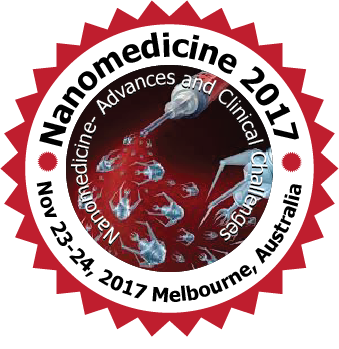
Jun Chen
Fudan University,China
Title: Microwave synthesis of Near Infrared Type II water-soluble Lead Sulfide Quantum Dots For in vivo Bioimaging
Biography
Biography: Jun Chen
Abstract
Ribonuclease-A (RNase-A) encapsulated PbS quantum dots (RNase-A@PbS Qdots) which emit in the second near-infrared biological window (NIR-II, ca. 1000−1400 nm) are rapidly synthesized under microwave heating. Photoluminescence (PL) spectra of the Qdots can be tuned across the entire NIR-II range by simply controlling synthesis temperature. The size and morphology of the Qdots are examined by transmission electron microscopy (TEM), atomic force microscopy (AFM), and dynamic light scattering (DLS). Quantum yield(QY) measurement confirms that the prepared Qdots are one of the brightest water-soluble NIR-II emitters for in vivo imaging. Their high QY(∼17.3%) and peak emission at ∼1300 nm ensure deep optical penetration to muscle tissues (up to 1.5 cm) and excellent imaging contrast at an extremely low threshold dose of ∼5.2 pmol (∼1 μg) per mouse. Importantly, this protein coated Qdot displays no signs of toxicity toward model neuron, normal, and cancer cells in vitro. In addition, the animal’s metabolism results in thorough elimination of intravenously injected Qdots from the body within several days via the reticuloendothelial system (RES), which minimizes potential long-term toxicity in vivo from possible release of lead content. With a combination of attractive properties of high brightness, robust photostability, and excellent biocompatibility, this new NIR-II emitting Qdot is highly promising in accurate disease screening and diagnostic applications.

